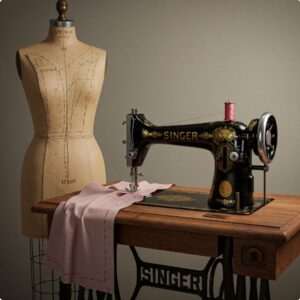The nigt the city wore velvet
<!doctype html>
The Night the City Wore Velvet

By Fashiomy Editorial —
A midnight collection, a secret alley runway, and one dress that made the crowd forget the rules—this is the story that turned whispers into wardrobes. Read on—if you dare to be remembered.
Image: Midnight runway — velvet & whispers
They said the district was dead at midnight, but fashion never listens to what they say—only to what it feels. The air smelled of rain and aerosol; every lamp post cast a halo like a spotlight waiting for confession. That night, the city promised to remember. And you could already feel the suspense crawling along the hem of your coat.
At the corner where the old bakery used to hum, a cluster of people gathered—designers who had burned their notes, models who had rehearsed on trains, photographers with lenses like hungry moons. None of them expected the dress that arrived folded in a courier’s arms like contraband, but disappointment was a thought the dress refused to entertain.
Design as dare
The seam was a secret language: stitched tight where courage should be, left raw where the truth might seep through. When the fabric unfurled, it was velvet that knew how to whisper and shout at the same time—soft in the light, volcanic in movement. Everyone leaned in as if leaning could catch the first note of an idea before it escaped.
It wasn’t just the texture; it was a silhouette that refused to be polite. It hugged the memory of other eras but nudged them toward danger. The dress was both armor and invitation—ask anyone who saw it and they’ll tell you the same thing: it made the sidewalks feel like a runway and the sidewalks answered back.
The midnight runway
They cleared an alley like surgeons clearing a space for something that might change lives. Someone lighting a cigarette coughed and then forgot to breathe; the hush that followed was a sound you could wear. Models stepped out like witnesses delivering testimony—each stride a sentence that questioned the ordinary.
«When she walked, the city bent toward her,»
said a photographer later, and the photograph he took looked less like a picture and more like an accusation: every viewer would be guilty of wanting the feeling the dress promised. The flash was not an interruption; it was a verdict.
Rumors stitch themselves into trends
By dawn the story branched—posts, whispers, a sketch passed from hand to hand like contraband scripture. People began to wear fragments: a velvet glove, a scarf knotted like a secret, a heel that remembered the click of midnight. The city caught the contagion quickly because this was a fashion that spoke in gestures everyone already knew how to make.
Retailers found mannequins rearranged overnight. Baristas started tying scarves in unfamiliar knots. Even the street vendors who sold coffee at 6 a.m. looked sharper, as if they’d taken notes the night before. The dress had been a spark; the city was now an unavoidable story.
Who gets to rewrite the rules?
Not the critics, who still wrote with lined pens and old maps. Not the institutions, which preferred their rules folded and labeled. The rewrite came from anonymous hands and daring tails—collective edits scribbled on the margins of what fashion had been. It arrived as a rumor and left as a mandate: style was once again a conversation, and everyone who listened could be a speaker.
The lesson wasn’t about velvet or hem lengths; it was about permission. The dress offered none. It invited complicity, the kind that demands you meet its gaze and choose what to become. In that choice, the city’s wardrobes changed without any committee’s consent.
Afterglow
Weeks later, the alley remained an atlas of footprints and lipstick marks, evidence of a night that refused to be archived quietly. Designers tried to replicate the magic in workshops and showrooms, but the original had been a moment stitched from brilliant accidents and brave mistakes. Replicas were flattering but hollow, like echoes without an origin.
Still, the ripples did their work. Velvet found its way into daytime wardrobes, unexpected pairings made the commute feel dangerous in the best way, and conversations about «what to wear» turned suddenly philosophical. Fashion, for a moment, asked questions people hadn’t known they wanted to answer.
How to wear the memory
If you find a scrap of velvet in a thrift store or a curiosity that feels like midnight, treat it like evidence. Layer it with confidence, let it contradict the rest of your outfit, and wear it where eyes will meet rather than avert. The memory of that night is a tool—use it to cut through the ordinary.
And if you pass the old alley and someone still lingers with a camera, smile like you know a secret. The city remembers those who keep its stories alive, and fashion honors the ones who refuse to be forgettable.
Related Posts
-
 The Model Who Vanished Before the Runway: A Fashion Mystery That Refuses to Fade
No hay comentarios | Nov 16, 2025
The Model Who Vanished Before the Runway: A Fashion Mystery That Refuses to Fade
No hay comentarios | Nov 16, 2025 -
 The Mirror Dress Mystery: The Night Fashion Reflected a Secret No One Expected
No hay comentarios | Nov 15, 2025
The Mirror Dress Mystery: The Night Fashion Reflected a Secret No One Expected
No hay comentarios | Nov 15, 2025 -
 The Silent Dress: The Fashion Piece That Changed Destiny Overnight
No hay comentarios | Nov 16, 2025
The Silent Dress: The Fashion Piece That Changed Destiny Overnight
No hay comentarios | Nov 16, 2025 -
 The Dress That Returned After 70 Years
No hay comentarios | Nov 16, 2025
The Dress That Returned After 70 Years
No hay comentarios | Nov 16, 2025
